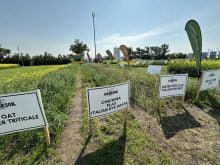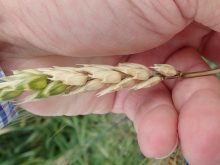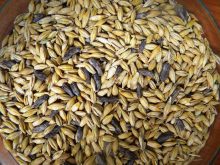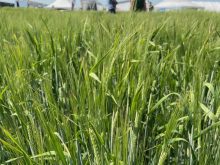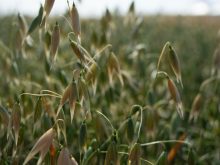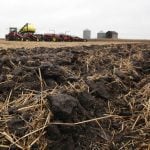When Steve Larocque learned that New Zealand farmers have pulled in barley yields of 180 to 200 bushels per acre, he decided to give it a try in Alberta.
Larocque runs Beyond Agronomy, an independent crop consulting business at Three Hills, Alta., and farms 1,000 acres just north of Drumheller, Alta. He grows wheat, barley, canola, peas and fava beans and has been operating his farm with a controlled traffic system since 2010.
Read Also
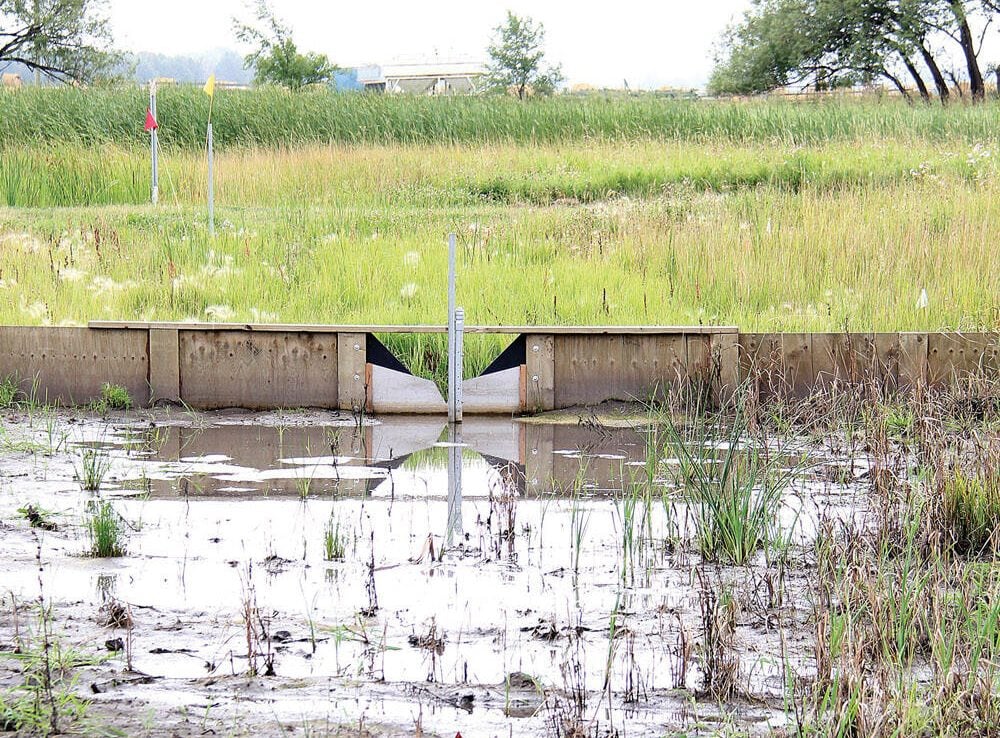
Bioreactors in tiled fields could themselves benefit from draining
Bioreactors are meant to filter nitrogen from tile water and reduce extra nutrient running off int0 local rivers and lakes, but drying them out from time to time might increase their effectiveness.
At the start of his work on increasing Alberta barley yields, Larocque got together with Alan Hall, from the Alberta Crop Industry Development Fund (ACIDF).
Larocque and Hall discovered that in the late 1980s/early 1990s, some experiments with very small plots with intensive agronomy packages successfully yielded just over 180 barley bushels per acre, just south of Drumheller. In Vauxhall, 205 barley bushels per acre were harvested, from small fields seeded with varieties like Harrington (a two-row malt barley variety not known for its high yield).
“The challenge was to replicate this from a small plot where you have a homogenous soil type and a homogenous elevation to an 80 acre field with variations,” said Larocque.
Barley 180
With help and funding from the Alberta Barley Commission and the Alberta Research Extension Council Association, the Barley 180 Project started in 2011.
With two agronomists and five sites in the first year, the project reaped 156 bu./ac. on black soil and 141 bu./ac. on dark brown soil. With these results, Larocque said, “We thought, wow here we go.”
As they fine-tuned the agronomics and figured out which inputs were providing the greatest benefit, they tried out some fungicide treatments inside of the high yield, leaving an area unsprayed.
“Doing that in 2012 was a big challenge, as it didn’t rain,” said Larocque. “Yet, we still did 100 to 120 bushels, which was still great considering we only got four, five, or maybe six inches of rain.”
In 2013, there was excessive rain, 12 inches in four weeks, but, they still achieved 100 bu./ac.
Through all the trial and error, Larocque and team sought a recipe with the biggest economical benefit — eventually narrowing it down to nitrogen and fungicides combined with plant growth regulators.
“Although many things are important, nitrogen, fungicides and plant growth regulators are the areas we focused on, to see how we could get the biggest benefits,” said Larocque.
“If we applied all the nitrogen up front — 180 to 200 pounds of nitrogen — it’s higher risk and a tremendous expense put into that crop. But if you’re willing to take that risk, it’s not a bad idea. This is how we set the record, by banding all the nitrogen up front.
“But,” Larocque says, “if you apply that much nitrogen up front, you really have to come in with a growth regulator, because you’re going to push all sorts of vegetative growth and weaken the stems.” Without a growth regulator, barley plants that generate yields this high will just fall over.
From the Manitoba Co-operator website: Malt barley supplies large ahead of new crop year
Growth regulators
Growth regulators have been the most remarkable aspect of the project for Larocque.
“One of my frustrations with barley used to be, in certain areas where I could put 100 pounds of nitrogen but no more, it would just lay flat, fall over,” said Larocque. “Growth regulators have really helped keep a 156 bushel barley crop standing, which is just phenomenal.”
Larocque and team have been trying the products Ethrel (from Bayer) and Cycocel (from BASF). To date, Ethrel (with the active ingredient Ethephon) has shown the most benefits.
However, Larocque and team have found Ethrel’s application timing to be “finicky” as it has to go according to a particular growth stage. “It has to go at the late flag just before the spike emerges from the boot — no later, no sooner,” said Larocque. “This makes it a difficult product to scale out onto big acreages. But, it’s $5 to $6 per acre and can sometimes shorten a crop for six to 10 inches, depending on the variety.
Larocque says growth regulators are known to be risky. It they are applied at the wrong time, or the weather doesn’t co-operate, they can reduce yield by 20 or 30 per cent.”
From Larocque’s prospective, growth regulators are worth the risk, especially when applying such high rates of nitrogen combined with high plant densities. The risk of the plants falling over and reducing yield is greater than that of dropping yield due to poor application timing.
As for fungicides, Larocque and team use them in a preventative manner to keep the plants healthy and alive longer. “By keeping plants green and intact longer, they are healthier and it delays senescence (the onset of those plants dying off),” said Larocque.
The plants continue producing photosynthesis and can use all the applied nitrogen.
Extra nitrogen, growth regulators and fungicides work well together. “Combining all three practices doesn’t equal three,” said Larocque. “It’s actually ‘one plus one plus one equals seven,’ because when you combine fungicide with a high nitrogen rate, you get a greater yield response than with individual nitrogen or fungicide. Then you put on the growth regulator to ensure the plants stay upright, so you can harvest and have a winner.”
Try this at home
Here are three tips for trying this at home.
1. Larocque recommends starting out with a split nitrogen application mixed in with a couple of fungicide applications and an on-time growth regulator. Since most farmers considering this probably already use fungicides, this will only add a couple of extra trips to the field — one to apply nitrogen and one to apply growth regulator.
2. Make sure to find and book your growth regulator ahead of time. Supplies may be limited.
3. Set up an agronomy program and keep it simple, beginning with the added applications of nitrogen and then a growth regulator, and then just go for it. Be sure to watch your timing and late flag hit it with the growth regulator and see where you end up.
Larocque believes this system has great potential anywhere in the world, as long as producers keep in mind their particular potential. If you farm in a dry area, where 80 bushels per acre is a really good yield, you may want to fertilize to push for 100 bushels. In this case, you may not need a growth regulator or you may only want to use it at a lower rate.
The aim is to find ways to increase yield regardless of location or conditions, so farmers can bring their barley yields up by 15 to 20 per cent.




